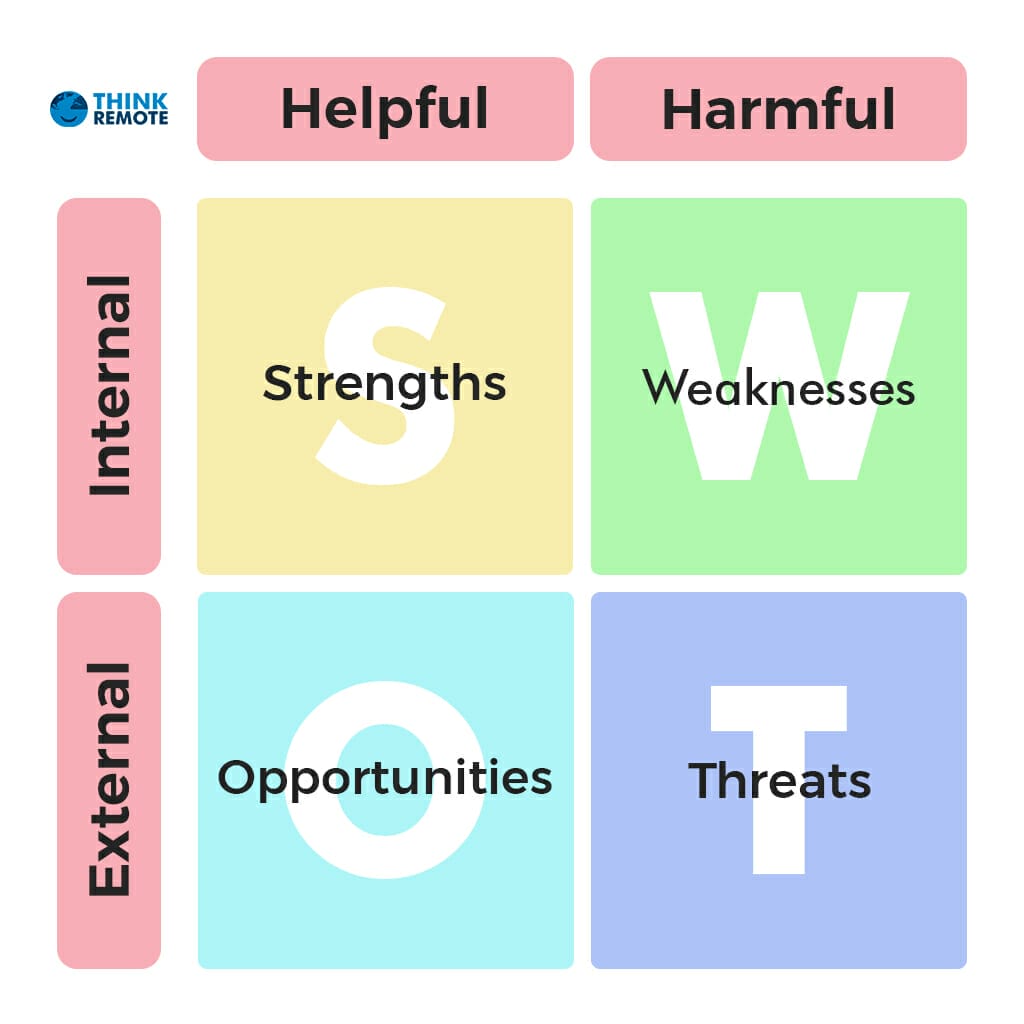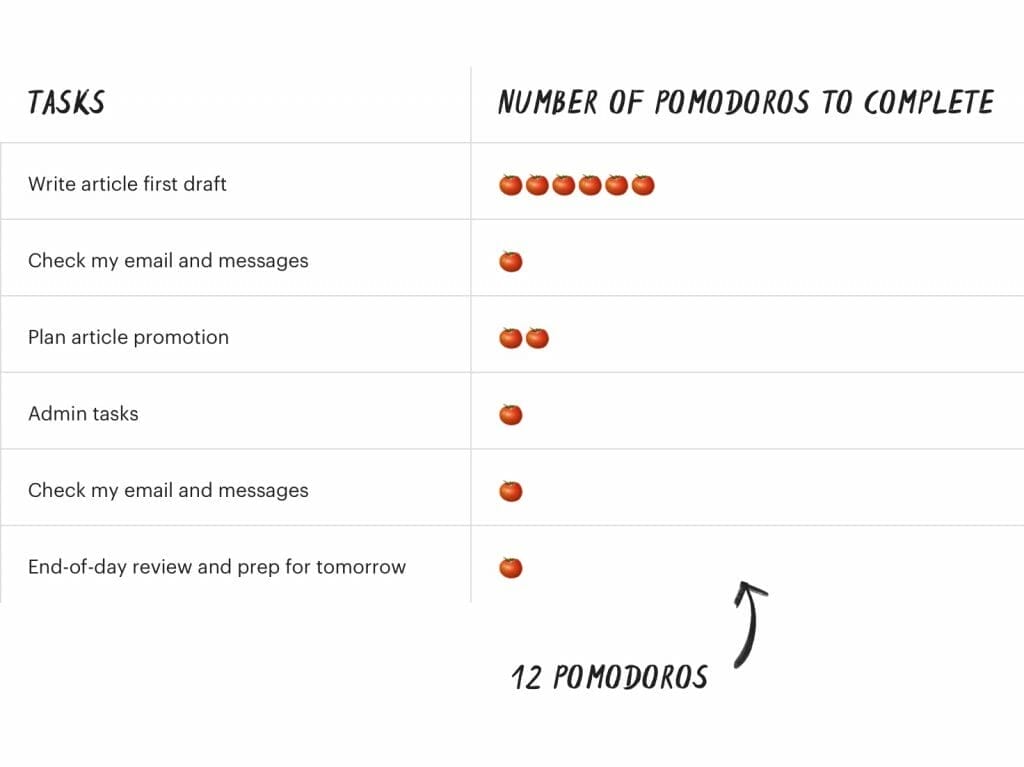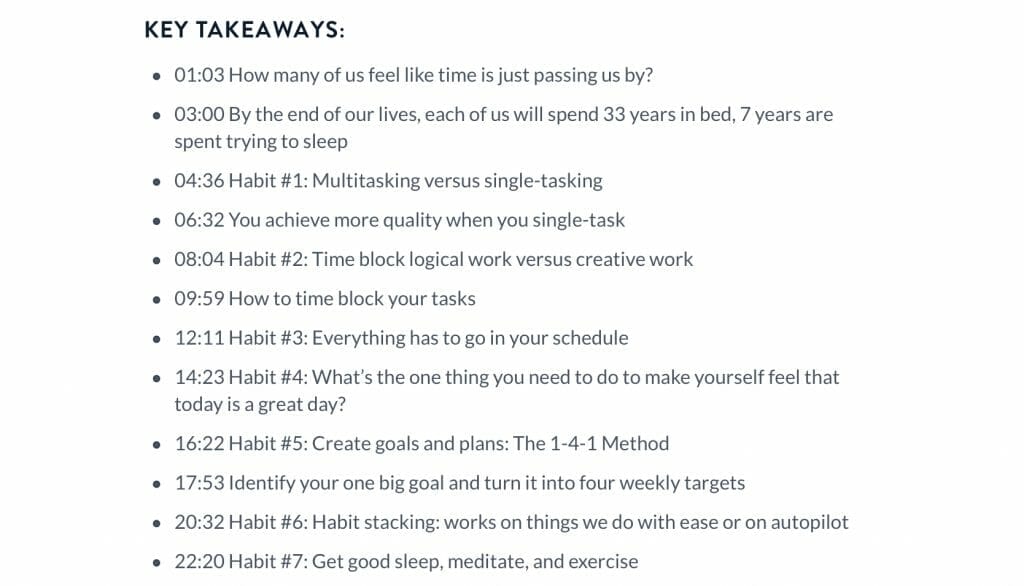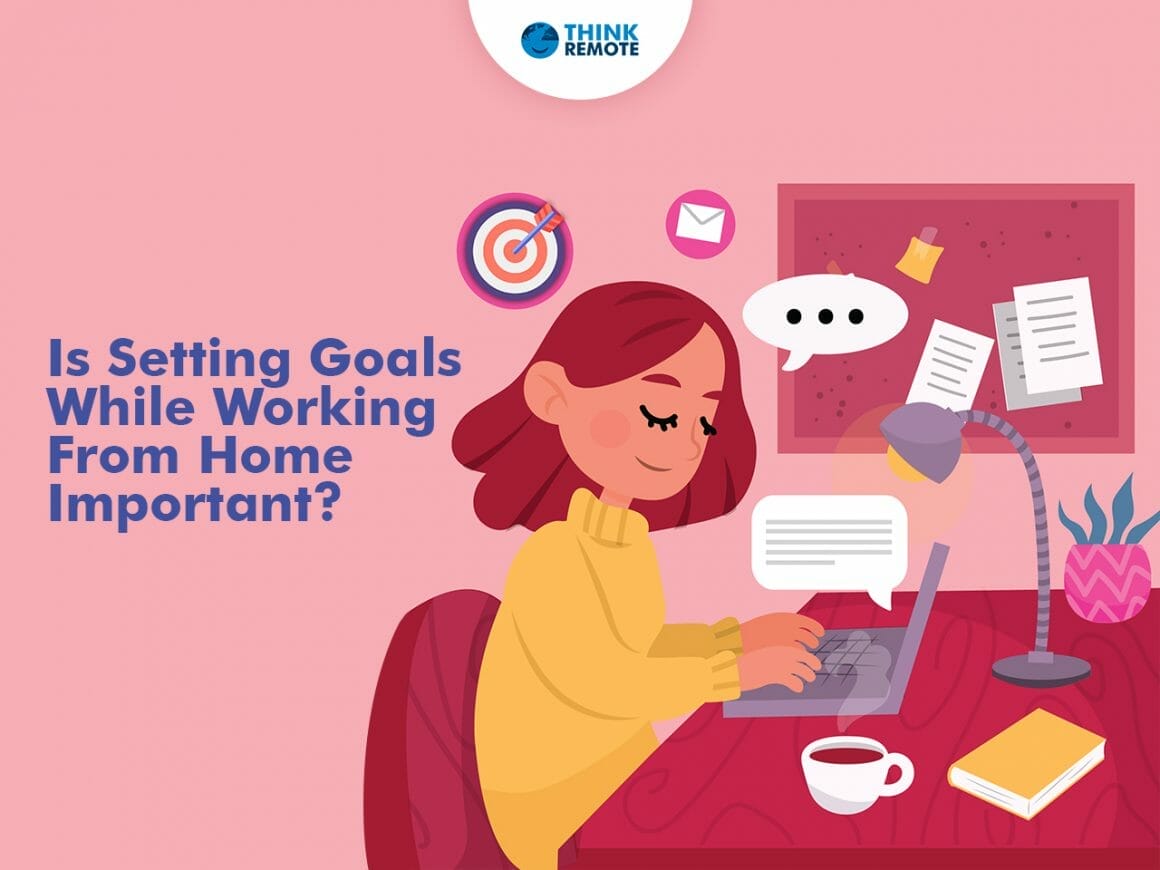Directionless means senseless. Imagine being on the road and running helter-skelter like a mad person, not knowing where to go. That’s what you look like when you don’t set your work from home goals.
You can only decide which road to take when you know the destination. Similarly, you can only create a schedule and plan your work when you know the end goal. This is especially true if you’re working from home. You get lazy and then you start procrastinating. We will discuss that later but first, let’s look at the advantages of setting goals.
Positive Impact Of Goal Setting
Everyone talks about goal setting but is there any proof that it works in our favor? There are many relevant studies that showcase the positive impact of goal setting. It works positively for you as an employee and for your organization too.
- According to a finding by Locke and Henne, goal-setting led to increased performance.
- Terpstra and Rozell’s research found that organizations that “used goal-setting were more profitable than those who did not,” resulting in a “positive relationship between goal setting and profitability”. Also, “Goal setting constitutes a simple, but potentially powerful means of increasing organizational effectiveness”.
All the findings of the detailed hypotheses and studies can be found here.
- Setting goals is linked with self-confidence, motivation, and autonomy (Locke & Lathan, 2006).
- Psychologist Gail Matthews’ studies showed that when people wrote down their goals, they were 33 percent more successful in achieving them than those who just thought about them.
Why Is It Important to Set Goals When Working From Home?
Remote work, the new norm that’s here to stay, has a lot of employers worried. Why? They feel that their employees might not be as productive while working from home as when they worked in the office. There’s no direct supervision which means people who work from home could be more prone to procrastination.
It’s like, “Nobody’s watching. Party time!” – You wouldn’t want to be this employee because this attitude might not only get you kicked out of your job but also cause you career troubles. You’ll get used to not working, and that will lead to more procrastination over time. Setting work from home goals and objectives can help you avoid this scenario.
Here are some reasons why you must set work from home performance goals:
- Goals make you more accountable for your tasks.
- When you know all you need to do in the day and the week, you’ll procrastinate less and do more. This will increase your productivity.
- You’ll be more focused as you’ll know what is to be achieved. You’ll set your schedule in alignment with those goals.
- Setting goals also reduces stress greatly because your work and your schedule is more organized. This spares your mind the extra work and effort to remember things. A less chaotic and cluttered mind is a stress free mind.
- Once you know what you’re set out to achieve, you can manage your time better, and distribute the workload evenly. This will help prevent burnout.
- Setting goals and crushing them makes success more tangible.
- According to famous life coach, Tony Robbins (one of my most favourite life coaches), “Progress equals happiness.” When we work towards a goal, we feel fulfilled and joyful in life.
How to Set Goals and Achieve Them While Working from Home
With so many benefits that come from setting goals, you must be wondering how and where to start with the goal-setting process. Here are some fantastic ways to set your short and long-term goals.
Remember, goal setting is not the same as setting up a schedule. A goal is an end, and a schedule or work plan is a means to that end.
1. Work SMART, not hard
Psychologists, life and purpose coaches, and scientists have so much help to offer. They conduct many studies and devise techniques to make our lives easier.
Setting SMART goals is one such method that was developed by George Doran, Arthur Miller, and James Cunningham in their 1981 article “There’s a S.M.A.R.T. way to write management goals and objectives”.
What does S.M.A.R.T stand for?
Specific: What do you want to do? Who will be a part of the team? Why are you doing this? When will you do this? Being specific provides a clear picture and vision. It also holds you accountable for the work you do.
Measurable: What is the parameter you’ll use to measure the task? What will you base your assessment on?
Attainable: Is your goal reachable with the tools you have? What else will you need? What else can you do to achieve this goal?
Realistic: Is it practically possible to meet the goals you are setting? If the goal is unrealistic, what will you need to make it attainable? Or do you need to change the goal?
Timely: What timeline have you set to achieve your goals and objectives? It is best to work backwards. Once you know your final goal, you can work backwards to create a structure. With backwards planning you’ll be able to see the bigger picture. You’ll also be able to identify everything that you’ll need to achieve the goal.
You don’t need to look for S.M.A.R.T goals examples because here’s one to get you started. With this, you’ll get an idea of how to create one for yourself.
It’s a great idea to use S.M.A.R.T technique to set your work from home goals. The method gives you a clear picture of your weekly, monthly, and even quarterly goals. Once you start planning backward, you’ll be able to gauge your progress. You’ll also be able to divide your time equally and plan better for timely delivery of work.
2. Don’t Sweat It, Just SWOT It
SWOT analysis. Some of you have probably heard of it while for some others this is an alien term. Fret not because we’re going to discuss this in detail. I’ve used this technique a lot many times for personal goal setting. The best part is that it focuses not only on what you can do but also on what you can’t and why. Let me explain.
Simply put, SWOT is short for strengths, weaknesses, opportunities, and threats. As you can see in the chart, there are possibilities and limitations for the goals you set.
How to perform a personal SWOT analysis for work from home goal setting?
Download this chart and ask yourself these questions. List them down in their respective sections in the chart.
- Strengths
- What skills, certifications, education, and network do you have that puts you in an advantageous position when compared to others?
- What personal resources do you have access to that will help you accomplish your goals?
- What do your colleagues and boss see as your strengths?
- What are your biggest achievements?
- What are the special values that distinguish you from others?
- Do you have access to influential people that others don’t?
Self-belief is one thing, self-aggrandizement another. Remember to be realistic here. Practice all the self-love while writing your strengths but practice all the restraint to avoid going overboard. Strike a balance and you’ll be able to build a practical list of your strengths.
- Weaknesses
- What tasks do you tend to avoid because you’re under confident about completing them?
- What do your boss or your colleagues think of as your weaknesses?
- Which is your weakest skill?
- What are your negative work habits? (for example, are you unpunctual? Are you disorganized? Do you lose your cool easily? Do you have poor stress management skills?)
- Are there any personality traits that hold you back in your career? For instance, if you’re in a communication related field, fear of public speaking can be a deterrent to your growth.
Be as truthful as you can be because this is an important part of the analysis that can help you understand your work style better. This can further help you set goals according to what works best for you.
- Opportunities
- Is there a new technology that you can learn to upgrade your skills and work?
- Are you working in a growing industry? How can you use the current market trends to your benefit?
- Do you have a good network that can help you with professional advice and career growth routes?
- Can you learn from others’ mistakes and use it to your advantage?
- Do you have time to attend online work from home events or conferences? You can find like minded people here who can open doors to new opport of learning and growth for you.
- If a colleague is going on a long leave, can you take on some of her/his tasks/projects to gain experience?
Based on the industry and work you’re in, there can be endless possibilities. It is best not to fill this part of the chart hastily. Take your time, and the moment some probable opportunity pops up in your head, jot it down.
- Threats
- What are your current work obstacles? What are the specific obstacles you face in a work-from-home environment?
- Do your colleagues compete with you for roles and projects? If yes, are they more experienced or skilled than you?
- Is the demand for your industry or the role you’re in on the decline?
- Do changes in technology threaten your role or position?
- Can any of your weaknesses be responsible for your threats?
Threats are always the most important part of SWOT for me. That’s because everything that I jotted down before threats (strengths, weaknesses, and opportunities) was based on perception, opinions, or situations.
Threats are the reality of ‘now’ and can affect everything else. For instance, what good will it be to be the best at knitting if use of wool gets banned in your country? Pay a lot of attention to threats. Threats will lead your work-from-home goal setting because the picture becomes the clearest in the end,
SWOT analysis is a great method if you have goals to set for yourself at work purely because it takes into account external and internal factors. As I mentioned before, it is a great mix of perception, opinion, situations and current realities. It gives you a look into what needs to be done immediately to build your career. It also lets you look at the bigger picture of the future which helps you set long-term goals.
3. Productive Pomodoros
“Pomodoros” from Italy translates to tomatoes in English. What have tomatoes got to do with goals? A lot. The pomodoro technique is widely used by remote workers and remote organizations to set goals and boost productivity.
- What is the Pomodoro technique and how does it work?
The interval-based productivity boosting method was developed by Francesco Cirillo during the eighties.
The Pomodoro technique helps you divide your workday into 25-minute sessions. Between every two sessions, there is a five-minute break. Each 25-minute interval of work represents one pomodoro. These are periods of “extreme focus”.
This kind of segmentation with alternating intervals of intense work and small breaks helps you value time and manage it better.
- Why is this technique called the Pomodoro technique?
Francesco Cirillo used a tomato shaped timer to measure his work intervals. That’s where this unique name comes from.
- Does this technique work? How?
The Pomodoro technique allows you to break big goals into smaller parts by dividing the work into 25-minute work intervals. Psychologically, this breaks down the perception of the enormity of the goal and you’re able to take the first step towards it.
The Pomodoro technique works well for those who tend to slack on big tasks or get easily overwhelmed if they have big goals to achieve. When you’re setting your work-from-home goals, this method can work wonders because it holds you accountable for every minute during the day.
It’s a great way to set goals and boost your productivity to achieve those goals.
Here’s an example of what a Pomodoro chart looks like. You can create one for yourself too. Count your Pomodoros every day to keep a track of your tasks and goals.
Remember not to overexert yourself in order to increase the number of Pomodoros a day. More work a day doesn’t equal better work a day. Quality over quantity because you don’t want an early burnout or a sloppy job done just to put a goal behind you.
Best combinations for short-term + long-term planning:
- S.M.A.R.T + Pomodoro
- S.W.O.T + Pomodoro
S.M.A.R.T helps you set practical and realistic goals according to what’s available and attainable. S.W.O.T helps you look at the internal and external factors that could influence the outcome of your strategy. Pomodoros keep your everyday work flowing in the right direction.
If you’re looking at yearly or five yearly goals in your work-from-home career then it’s best to go with all three.
Crush Your Goals But Wait!
I’ve told you everything about the best techniques for your work-from-home goal setting. It’s enough to get you started but you need something to stay motivated too. I’m no life coach (yet) or a motivation guru but here’s an episode from Jay Shetty’s podcast, “On Purpose” that will help you propel yourself into a self-driven and goal-oriented future. Here’s what the podcast will help you with.
Need a reminder from time to time? Bookmark this page and revisit it whenever you’re setting your work-from-home goals.
Work S.M.A.R.T! Spare the bones, crush the goals.






